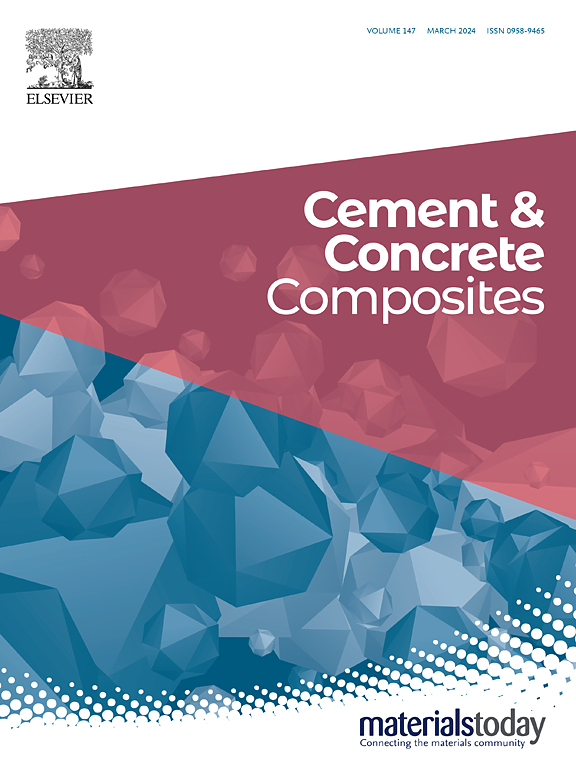Mono-/poly-disperse nano-silica deposition for carbon textile-reinforced concrete: Microscale characterization
IF 10.8
1区 工程技术
Q1 CONSTRUCTION & BUILDING TECHNOLOGY
引用次数: 0
Abstract
Structural use of carbon textile-reinforced concrete (CTRC) remains challenging, primarily due to the lack of thermomechanical robustness at the textile/matrix interface. Nano-silica (NS) deposition has emerged as a viable solution to oft-employed polymer-based practices. However, its bond-enhancing mechanism is yet far from clear. This study presents results from a series of microscale characterizations to elucidate how the hydrodynamic properties of NS particles influence deposition characteristics and the interfacial bond. Results show that NS particles adsorb onto the roving surface more effectively with smaller mean particle size and higher polydispersity. The underlying mechanism is the adsorption-based interactions involving deposition-driving forces and interparticle attraction, which compete against desorption to immobilize the deposited particles. Such variations in deposition characteristics lead to polymorphism in the reticular network layer of secondary calcium silicate hydrate (C–S–H) phases. Its coverage level and topographical complexity both favor cohesive interconnection and microstructural densification in the roving/matrix interfacial transition zone (ITZ), playing crucial parts in improving mechanical properties. Correlation analysis indicates that a comprehensive interpretation from both chemical and physical aspects is key to unraveling the bond-enhancing mechanism of NS deposition.
碳纤维纤维增强混凝土用单/多分散纳米二氧化硅沉积:微尺度表征
碳纤维织物增强混凝土(CTRC)的结构使用仍然具有挑战性,主要是由于织物/基体界面缺乏热机械稳健性。纳米二氧化硅(NS)沉积已成为一种可行的解决方案,经常采用聚合物为基础的做法。然而,其增强债券的机制还远不清楚。本研究提供了一系列微观尺度表征的结果,以阐明NS颗粒的水动力特性如何影响沉积特性和界面结合。结果表明,NS颗粒在粗纱表面的吸附效果更好,平均粒径更小,多分散性更高。潜在的机制是基于吸附的相互作用,包括沉积驱动力和颗粒间的吸引力,它们与解吸竞争以固定沉积颗粒。这种沉积特征的变化导致了二级水合硅酸钙(C-S-H)相网状层的多态性。它的覆盖水平和地形复杂性都有利于粗纱/基体界面过渡区(ITZ)的内聚互联和显微组织致密化,对提高力学性能起着至关重要的作用。相关性分析表明,从化学和物理两个方面综合解释是揭示NS沉积增强键机制的关键。
本文章由计算机程序翻译,如有差异,请以英文原文为准。
求助全文
约1分钟内获得全文
求助全文
来源期刊

Cement & concrete composites
工程技术-材料科学:复合
CiteScore
18.70
自引率
11.40%
发文量
459
审稿时长
65 days
期刊介绍:
Cement & concrete composites focuses on advancements in cement-concrete composite technology and the production, use, and performance of cement-based construction materials. It covers a wide range of materials, including fiber-reinforced composites, polymer composites, ferrocement, and those incorporating special aggregates or waste materials. Major themes include microstructure, material properties, testing, durability, mechanics, modeling, design, fabrication, and practical applications. The journal welcomes papers on structural behavior, field studies, repair and maintenance, serviceability, and sustainability. It aims to enhance understanding, provide a platform for unconventional materials, promote low-cost energy-saving materials, and bridge the gap between materials science, engineering, and construction. Special issues on emerging topics are also published to encourage collaboration between materials scientists, engineers, designers, and fabricators.
 求助内容:
求助内容: 应助结果提醒方式:
应助结果提醒方式:


